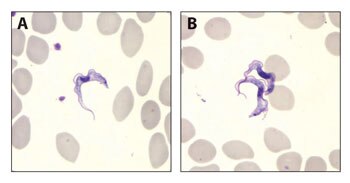Research Updates
On average, a lower blood pressure goal was no better than the standard blood pressure goal at slowing progression of kidney disease among African-Americans: who had chronic kidney disease resulting from high blood pressure, according to recent results of the African-American Study of Kidney Disease and Hypertension (AASK), the largest and longest study of chronic kidney disease in African-Americans. However, the blood pressure goal did benefit people who also had protein in the urine. The study, funded by NIH, appears in the Sept. 2 issue of the New England Journal of Medicine .
Gene variants in APOL1 come with both health risk and reward: as researchers—including one NIDDK intramural researcher and several others with NIDDK and other NIH funding—found when they built on a discovery linking variants in an MYH9 gene to higher risk for types of kidney disease. Now researchers report that much of that risk is actually due to variants in an adjacent gene, APOL1, which also appears to protect against African sleeping sickness. This finding—published in Science—may help improve treatments for both health issues.

The two Trypanosoma brucei subspecies that cause African trypanosomiasis, T. b. gambiense and T. b. rhodesiense, are indistinguishable morphologically. A typical trypomastigote has a small kinetoplast located at the posterior end, a centrally located nucleus, an undulating membrane, and a flagellum running along the undulating membrane, leaving the body at the anterior end. Trypomastigotes are the only stage found in patients. Trypanosomes range in length from 14 to 33 µm. Source: Centers for Disease Control and Prevention (CDC)
Co-funded by NIDDK: the Consortium of Food Allergy Research (CoFAR), established in 2005, will be funded for five more years. CoFAR will continue to foster new approaches to prevent and treat food allergies and also expand in scope to include research on the genetic causes underlying food allergy and studies of food allergy-associated eosinophilic gastrointestinal diseases.
In high-risk adults with type 2 diabetes, researchers have found that two therapies may slow the progression of diabetic retinopathy, the leading cause of vision loss in working-age Americans. The Action to Control Cardiovascular Risk in Diabetes (ACCORD) eye study found that intensive blood glucose control reduced the progression of diabetic retinopathy compared with standard blood glucose control, and combination lipid therapy with a fibrate and statin also reduced disease progression compared with statin therapy alone. Click here for more information.
Two common operations for stress urinary incontinence help women achieve similar levels of dryness, according to a team of urologists and urogynecologists who compared the treatments in a large U.S. trial published in the June 3 New England Journal of Medicine. The trial found that the two most common mid-urethral sling procedures are similar in their chance of cure, though each surgery has different risks. Click here for more information.
A daily dose of a specific form of vitamin E significantly improved the liver disease nonalcoholic steatohepatitis (NASH), according to a study funded by NIDDK. Results were published April 28 online in the New England Journal of Medicine. In addition, Actos (pioglitazone), a drug used to treat diabetes, also improved many features of NASH but was associated with weight gain. Click here for more information.
Click here for more information on these and other NIDDK-related advances.
Important Changes to NIH Applications: Starting this year, all applications for NIH grants have to comply with new instructions, including shorter page limits and restructured application forms.
- NIH will only accept post-submission materials resulting from unforeseen administrative issues.
- The deadline for receiving the materials will be 30 days before the review meeting.
- Submission requires “active concurrence” from the authorized organization representative.
NIDDK current funding opportunities
Grants and contract notices

